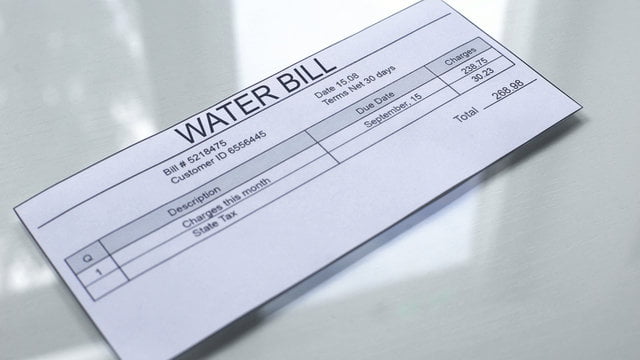


Introduction
Dear accountants and welcome back to a new post where we will be talking about how to record the journal entry for monthly water bills, each company has a monthly water bill and Since water bills sometimes arrive in the following month, companies must record an accrued expense to accurately account for the water usage. Let’s find out how to record it as an accountant.
The Difference Between a Water Bill and Accrued Water Expense
Water Bill: The actual amount you owe for water used during a specific billing period.
Water Accrued Expense: An estimated cost of water used between the meter reading date and your next bill.
Recording Water Bills Upon Receipt
While accruing for water expenses is essential for accurate monthly financials, there are instances when you’ll record the water bill directly upon receipt. This typically occurs when:
- The bill arrives within the same accounting period: You receive and pay the bill before the month ends.
- Your company chooses not to accrue for smaller expenses: For smaller businesses, the accrual process might be less critical for minor bills like water.
In this straightforward scenario, the journal entry is simple:
Example: Speak Accounting receives a water bill for $750 for June 2024 and records it immediately.
The journal entry would be:
| Account | Debit | Credit |
| Water Expense | $750 | |
| Water Company | $750 |
Recording Water Bills Using the Accrual Method
To accurately reflect the expense in the current month, we need to estimate the water cost before the bill arrives.
and this is when accrued expense becomes too important.
Let’s say Speak Accounting has a monthly water bill and it is expected to arrive in the next month and we will estimate a $500 water expense for June 2024.
We start by debiting Water Expense with $500, and crediting Accrued Utilities or whatever the accrued account name is in your system.
The journal entry will be:
| Account | Debit | Credit |
| Water Expense | $500 | |
| Accrued Utilities | $500 |
This creates a $500 water expense for June 2024. When the actual bill arrives, we have two possible scenarios:
Scenario 1: Actual Bill Exceeds the Accrual
Let’s say the bill shows $750. In this case, we would adjust the account as follows
We start by debiting Water Expense for $250, debiting Accrued Utilities for $500 and crediting the Water Company for $750.
The journal entry will be:
| Account | Debit | Credit |
| Water Expense | $250 | |
| Accrued Utilities | $500 | |
| Water Company | $750 |
and now we can reconcile the accrued utilities account and move on with our life.
Learn How To Record The Electricity Bill Journal Entry
Scenario 2: Actual Bill is Less Than the Accrual
in the second scenario we will imagine receiving a water bill that shows a $300 and remember we estimated a $500 only. The way we deal with this scenario is by:
We start by debiting Accrued Utilities for $500, crediting Water Expense for $200, and crediting the Water Company for $300.
The journal entry will be:
| Account | Debit | Credit |
| Accrued Utilities | $500 | |
| Water Expense | $200 | |
| Water Company | $300 |
By adjusting the account, we can accurately reflect the water expense for the month.
Recording the Water Bill Payment
After reviewing the water bill and ensuring its accuracy, you’ll proceed with payment. The journal entry to record this payment involves reducing the “Water Company” liability you established earlier and decreasing your cash balance.
Example: Following Scenario 1, where Speak Accounting received a $750 water bill, the journal entry to record the payment would be:
| Account | Debit | Credit |
| Water Company | $750 | |
| Cash or Bank | $750 |
This entry accurately reflects the financial impact of paying the water bill. Your “Water Company” liability is now zero, indicating the bill has been settled.
In conclusion, accurately recording your monthly water bills is crucial for maintaining sound financial records. Whether you choose to record the expense directly upon receipt or utilize the accrual method – potentially using a specific liability account like “Water Company” – the goal is to accurately reflect the timing and amount of the expense. While direct recording is simpler, the accrual method provides a more precise picture of your financial position by recognizing expenses in the period they are incurred.
Share this content:
